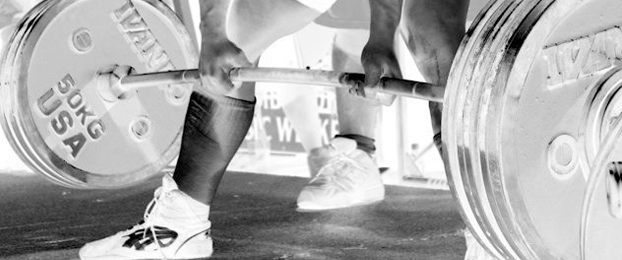
In any sport, athletes need to be able to accelerate as quickly as possible to get to the ball or opponent first. As a coach, you must put your athletes in the best possible position to succeed. I’m sure you can tell stories about athletes you’ve seen who haven’t mastered body control or even learned to skip correctly. Now, how are you supposed to teach these athletes proper sprinting mechanics?
Fake it until you make it!
This doesn’t mean have your athletes run until they get it right because they won’t get it right. You must teach them proper form even if you have to trick their bodies into it.
Partner marching drills*: This is the first drill that you need to teach. Have two partners face each other. The first person leans in at a 45-degree angle while their partner holds them in this position. Have the first athlete bring the right knee up, keeping the ankle behind the knee and the toe up toward the shin. This is triple flexion on the front side—the position your athlete would be in during acceleration. On the support leg (left leg), the athlete should be in triple extension. The left leg should be in a straight line with the hips, spine, and head. The ankle will be plantar flexed (pointed). Make sure that the athlete’s left glute is firing. For now, both arms should be at the sides.
From this position and on your command, the athlete will drive the right leg down and back with the foot landing behind the hips. Switch legs, and hold the position. On your command, the athlete will drive the left leg down.
*After this drill is perfected, you can add in the arms. Drive the opposite elbow down and back. Keep the hands loose but not open. The arms should remain at approximately 90 degrees from the elbow.
Performing the same drill with the athlete in motion is the next progression. To keep the athlete at the desired 45-degree angle, the athlete’s partner should resist slightly. The athlete will march for ten steps, forcefully driving the front side leg down and back. The forward movement should be short in distance, and the focus should be on the driving motion. The athlete should feel their feet behind them during these drills so that it seems natural when it’s time to accelerate during games.
The final progression of the partner marching drill isn’t a march at all. The athlete will be running this time. The object is for the athlete to make it to the cone (15 yards away) as quickly as possible while maintaining proper form. Their partner will provide more resistance. A common mistake is that the athlete bends or breaks at the hips. Make sure that there is a straight line from the support leg’s ankle all the way to the head.
Here are a couple more drills to use once your athletes have mastered the partner marching drills. Again, you’ll be putting their bodies in the right position without them even knowing it.



The pictures illustrate the starting positions for each exercise for speed training. You’ll notice that when your athletes are getting up and out of these positions they’re driving out at a 45-degree angle to the ground. They’re stepping over the opposite knee and driving the foot down and back into the ground to create maximal force. The foot strike will be slightly behind the hips. Your athletes will also learn to come up gradually using a proper acceleration pattern without trying to force themselves to stay low or pop up too soon.
All of the drills shown are great for the youth athlete. Teaching their bodies to learn, feel, and remember the correct pattern of proper mechanics will help them make huge improvements in their speed without any setbacks. It will also keep them one step ahead of the competition.
Elite Fitness Systems strives to be a recognized leader in the strength training industry by providing the highest quality strength training products and services while providing the highest level of customer service in the industry. For the best training equipment, information, and accessories, visit us at www.EliteFTS.com.








